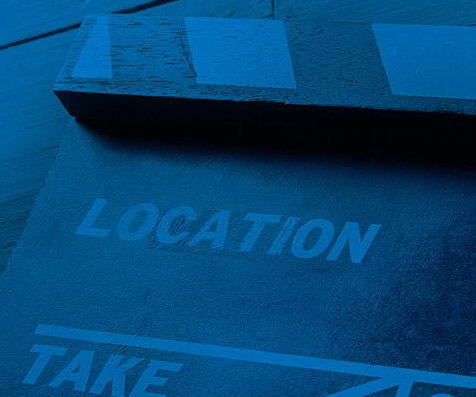More Merger Mania Ahead For Pharma
More Merger Mania Ahead For Pharma
More Merger Mania Ahead For Pharma
The scramble for new drugs is keeping companies on the prowl
During a luncheon at the recent JPMorgan Healthcare conference in
Merger mania is sweeping through the life sciences sector--a trend that shows no signs of slowing. In 2006 a record 1,009 biotech, pharmaceutical, and medical device companies were snatched up for a total of $135.9 billion, according to M&A tracker Dealogic. That's up from 923 deals in 2005 and 740 in 2004. With echoes of Auld Lang Syne still lingering in the air, 13 acquisitions worth $1.2 billion are already in the can for 2007. Abbott Laboratories, which bought Kos Pharmaceuticals Inc. in 2006 for $3.7 billion, is among the companies loudly declaring a hunger for more deals.
One might expect Boston Scientific Corp.'s disastrous $27 billion purchase of stentmaker Guidant Corp. in January, 2006, which led to a 40% drop in Boston Scientific's share price, to dampen the excitement. Not so. "Demand has not diminished," says JPMorgan pharma analyst Chris Shibutani, who notes that many companies presenting at the conference were marketing themselves as attractive partners for anyone looking to make a deal. "It was stunning."
A confluence of events is driving the deals. First, the American Jobs Creation Act of 2004 freed up pharma companies to repatriate more than $100 billion in foreign earnings at a low tax rate--funds they can use to make investments. At the same time, dozens of blockbuster drugs started coming off patent and going generic, while some companies suffered disappointing clinical trials of drugs in their late-stage pipelines. Now companies are scrambling to find innovation beyond their own laboratories.
Among the major shoppers is Pfizer Inc. Its $12-billion-a-year cholesterol drug Lipitor will lose patent protection in 2011, and in December the company had to drop its experimental cholesterol treatment, torcetrapib, because of unexpected deaths in its clinical trials. On Jan. 22,
Venture capitalists say others are sniffing around their portfolios, too. Often a potential acquirer will follow a drug's progress through years of testing, letting VCs foot the bill, and then swoop in once they're sure the drug is well on its way to market. "Acquirers are willing to pay more for later-stage, de-risked assets," says Ellen Koskinas, a partner with InterWest Partners in
Johnson & Johnson, which forked over $16.6 billion for Pfizer's over-the-counter drug unit last year, could continue its acquisition binge in 2007. With more than $9 billion in free cash flow, J&J can easily make additions to its pharmaceutical and medical device divisions. The company recently picked up small stent developer Conor Medsystems Inc. for $1.4 billion and has expressed interest in building a franchise in neuromodulation, the use of electrical signals to relieve pain, brain diseases, and other disorders. Last year analysts were buzzing that J&J might acquire Medtronic Inc. for its stents, defibrillators, and neuromodulation products. But Medtronic's stock has risen 30% over the last year, and with a market cap of $62.5 billion it would be a lot to swallow, even for J&J. Instead, J&J and other device companies are likely to cherry-pick among more bite-size startups.
Technology "platforms" that have not yet yielded marketable products can nonetheless be sought-after acquisition targets. In October, Merck & Co. paid $1.1 billion for San Francisco-based Sirna Therapeutics, which is developing drugs based on
Another platform company that may be on the radar screen of potential acquirers is Medarex Inc., which has developed a mouse with a near-human immune system. It could simplify the process of identifying compounds likely to work in humans. In December, 2005, Amgen Inc. acquired Medarex rival Abgenix Inc. for $2.2 billion. With Medarex' cancer drugs now showing promise in early trials, many analysts are betting it will be among the biotechs that get picked off. "Companies are looking for differentiated technologies," says JPMorgan biotech analyst Geoffrey Meacham. "Medarex has one of the better platforms."
As for Bristol, the Plavix trial and a Justice Dept. investigation into whether the company violated any laws in its dealings with generic drugmaker Apotex Inc. have overshadowed what is otherwise a promising outlook.
FULL PIPELINE
In the realm of midsize companies, Wyeth could also emerge as an acquisition target. Last year, the Madison (N.J.) company settled the majority of the legal claims stemming from its pulled diet drug, fenphen. Wyeth is still weighed down by concerns that its hormone-based menopause treatments increase the risk of breast cancer. Sales of the drugs have been declining for years and could take a further hit from a December report that suggested rates of breast cancer fell in line with a 2002 drop in the use of hormones. Wyeth's stock is trading at a price-earnings ratio of 16.5--a 16% discount to that of the Amex Pharmaceutical Index. But Wyeth has about 60 drugs in development, and it could file for a half-dozen or so approvals this year. "This is the best pipeline we've ever had at Wyeth," Dr. Joseph S. Camardo, senior vice-president for global medical affairs, told a group of investors at the health-care conference. Camardo had to be shooed off the stage because he couldn't describe all of Wyeth's upcoming drugs in his allotted 30 minutes. That's a problem a lot of Big Pharma companies probably wish they had.
Boutique executive search services with best in class global network, contacts and market mastery.
Deeply connected and engaged personal service approach, long-term investment in client community and 25 year history of strong relations with both Multi-National leaders and Private Equity partners.






